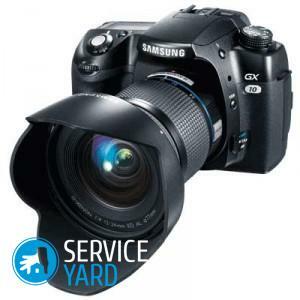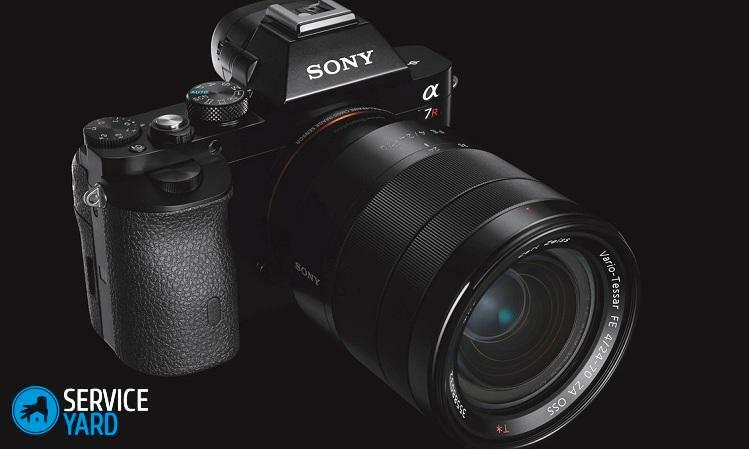
- Matrix. What is she like?
- Resolution
- The physical size of the matrix
- What is better in the end?
Everyone who plans to take pictures, responsibly approaches the choice of the device itself. And it is right. First of all, every amateur and professional pays attention to the quality of the matrix. Its size is a very important parameter, but first you should get acquainted with the device itself, which is a matrix of the camera. Which is better?- with this we will understand in this article, and for this you need to bump into the study of all its characteristics.
to the contents ↑Matrix. What is she like?
A matrix is a surface on which light enters and creates electrical impulses. This phenomenon is processed by the processor, after which the information is written in the form of digital values. In other words, the photo sensor digitizes the rays of light, which in the future we can observe in the form of a photograph taken.
to the contents ↑Resolution
The photosensor is a set of pixel sensors. The number of these pixels characterizes the resolution of the digitized image. The detail is determined by the number of these pixels. Now you understand what the clarity of the image depends on. For DSLR-cameras this amount is called megapixels.
Important! The prefix "mega" can be replaced by a conditional multiplication by one million.
Modern technologies have up to 30 million pixels. The size of the matrix inversely affects the depth of the sharpness of the photograph. Also this parameter affects the pixel dimensions, only in direct proportion. It is not difficult to conclude that photosensitivity and color rendition depend on the size.
Important! Each of the pixels forms only one point of the image, hence it follows that their number will determine the detail of the photo.
The size of the camera matrix, which is better to choose? Let's first understand his purpose.
to content ↑The physical size of the
matrix This parameter plays one of the most important roles in the work of the camera. Obviously, we are talking about geometric dimensions. The width and length of the sensor sensor is measured in millimeters, and in some chambers can be converted into inches.
Important! When choosing a camera, you should select smaller values in inches, since the characteristics always indicate the return value.
This size also affects the digital noise that occurs when the main signal is transferred to the camera's transmitter. From the area depends on how much light gets on the sensor.
Recently, it is customary to take into account the coefficient "crop factor", which shows the ratio of the sensor and the full frame.
Photosensitivity
Photosensitivity is the property of films or matrices that are made of a material sensitive to light. This parameter characterizes the rate of "absorption" of light. By standards, this parameter is usually referred to as ISO.
Important! The higher this value, the smaller the number of light rays required for shooting. This phenomenon is very useful when you need to work in a dimly lit room.
This indicator indicates the ability to amplify the signal. All this means that a high ISO will result in a greater signal gain, but it will not be possible to avoid amplification of noise. Therefore, large values are not always an indicator of quality.
Important! Refrain from such cameras, if you do not respect the graininess.
The most optimal ISO value should be somewhere around 400 units.
So we went on to the most important question: what type of matrix is better for a camera? .

Types of camera dies
Select the following types of matrices, which depend on the type of filter used:
- RGB is the cheapest type, which has the biggest distribution in photo technology.
- RGBW.Models with this type will cost a little more expensive, but, as you know, you have to pay for quality. RGBW is convenient to use in dimly lit places.
- RGBE.In such matrices, a Baer filter is installed, which positively affects the color gamut of the photograph. The colors of such photos are as close to natural as possible.
It is also possible to classify sensors according to two different types of sensors:
- CCD( CCD).Provides sequential reading from the information cells.
- CMOS( CMOS).Reads the data separately for the specific address of the desired cell.
What are their differences?
- CCD matrices are demanding in time to "create" a photo. Such devices are unprofitable to use for fast shooting.
- If you are interested in automatic focusing or exposure meteorology, CMOS type bsi is the best option for purchase.
- CCD-matrix has an undeniable advantage over CMOS - this is its small size. A polysilicon light-emitting diode allows to achieve smaller dimensions of this element, but it also detrimental to the quality of images in those rooms that are equipped with poor lighting.
- The structure of the CMOS matrix uses semiconductors of metal oxide materials, which lead to a larger size, but allow to obtain better quality of photographs.
What is better in the end?
It is impossible to find an objective opinion on this score, because each technology has undeniable advantages and disadvantages. And everything, to a greater extent, depends on the scope of their application.
We hope that, based on the reading, you were able to determine which type of matrix is best for the camera for you. Successful staff!



